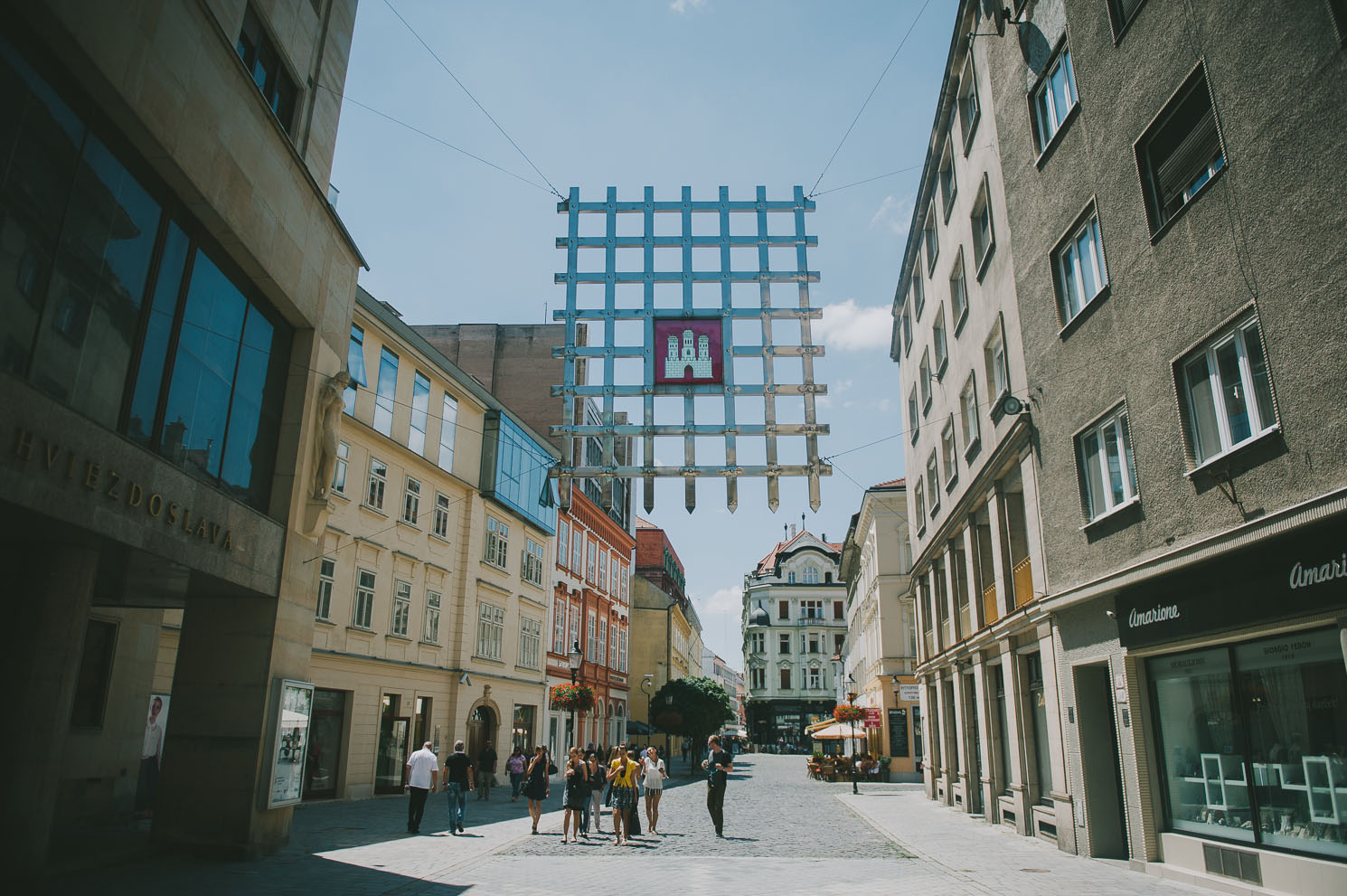
We’ve all been there — you’re excited to be in a brand-new city, ready to embark on all those adventures you dreamed of in your plans and to check one more location off that carefully curated bucket list, when the familiar ticking of a deadline slowly seeps into your head. Maybe your stop is just a smaller part of a larger trip, or maybe you (like many other people), just don’t have the free time to travel as long as you would like. Whichever it is, the feeling and time crunch isn’t unique; us travel enthusiasts seldom feel like we’ve truly spent enough time in a new city, especially if it was one of those quick weekend trips.
Now, I’m not throwing saying weekend trips are too short to be worthwhile — I actually think it’s the opposite — but what I am saying is you shouldn’t let the time crunch stress get to you. In fact, leave the stress completely behind! You’ve only got a weekend in Bratislava? Well, make it the Best.Weekend.Ever. with these tips and tricks for cramming it all in.
Bratislava has a ton to do, so make sure you bring a great appetite (both for places and for some great food) and your walking shoes because we’re not stopping for anything (well, okay, maybe a beer or glass of wine or two). #Localsknow that on a weekend morning, there’s only one thing to do if you want to blend in and see some amazing local colour: head to the markets. Though Bratislava isn’t bereft of shopping centres, the kind of markets I’m talking about don’t house your standard H&M (though you may be able to find some cool threads at the ones I do mean). No, I’m talking about open-air farmers’ markets and Bratislava has quite a few.
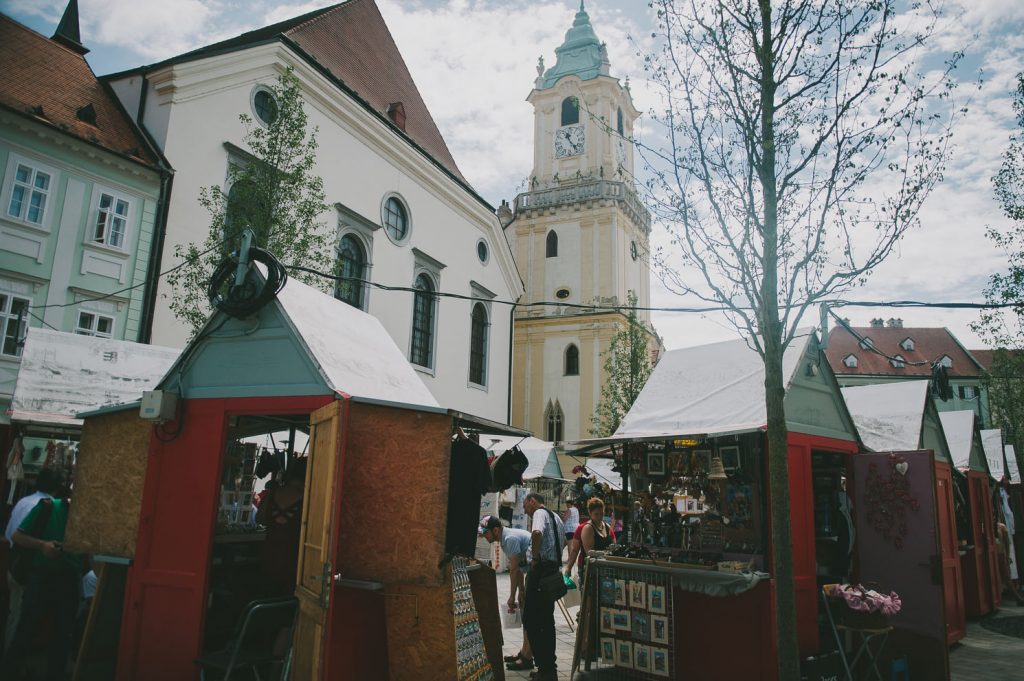
Be sure to hit up the markets while you’re in town | Photo by Alexandra Siebenthal
If you intend to stay close to the old town and the left bank of the Danube, I’d recommend the Old Market, aka Stará Tržnica. While this market is not open-air, the atmosphere maintains a unique feel as it takes place in an eclectic old building that doubles as a centre for events and conferences when it’s not market time. Open on Saturdays, this market is a great spot to check out some local fruits and veggies from the Bratislava region. If you’re looking for the real Bratislava market experience, though, you’ll have to head outdoors to Miletičova Street, where you’ll find a market so popular, it’s endearingly called Miletička.
Known as Bratislava HQ for cheap clothing, shoes, and accessories, Miletička also boasts some great fruits and veggies sold straight from the farmers. One cool aspect that the team at Bratislava Urban Adventures pointed out to me was that if you listen closely, you might be able to hear more than just the standard Slovak being spoken all around you. The reason for this linguistic smorgasbord? For one, Bratislava is located close to the borders of both Austria and Hungary, leading to a bunch of cultural influences throughout the many eras the city has weathered. The countryside keeps traditions, and as such, some of the farmers who make the trek to Miletička to sell their produce don’t necessarily speak Slovak as their native language. The atmosphere is bustling and friendly, and I for one don’t think it’s possible to make your way through Miletička without feeling as if you’ve stepped into another world.
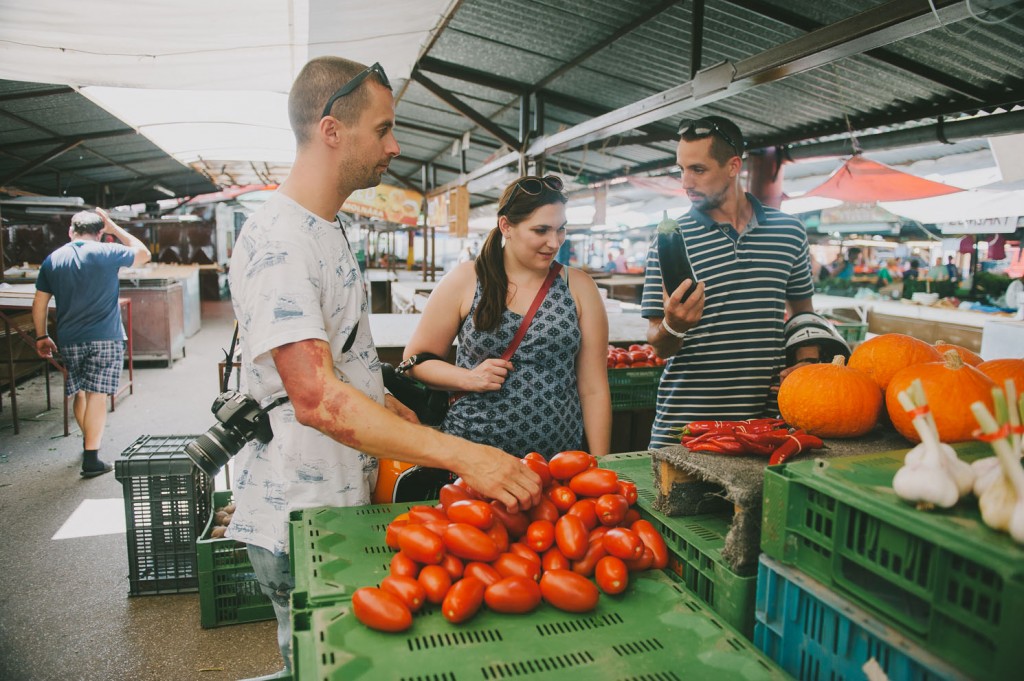
As fresh as fresh can be — buy a few pieces of produce directly from the farmers | Photo by Alexandra Siebenthal
Another great reason to head to Miletička is the food, should you get there early enough. In addition to having some awesome produce, the market’s also home to some of the tastiest langoš, (deep fried dough covered in cheese, ketchup, and garlic) you’ve ever tried (and possibly even the first)! This originally Hungarian treat is best tasted straight from the fryer, and that’s exactly how the Miletička market serves it up. I’m not saying it’s nutritious, but I am saying mmmm… breakfast of champions!
Want something a bit less busy? Head across the river to the right bank, or Petržalka, as the area is officially known. While the entire neighbourhood of this once small village has grown to include much of Bratislava’s population, the shaded riverbank provides a quiet place to stroll along the water. You won’t encounter markets like Miletička, but you will find a number of cool riverside hangouts and even simulated beaches, should you have brought your suit. One recommendation I have for the morning is to head over and grab a smoothie or fresh fruit juice from a juice bar located in the shade of some tall trees.
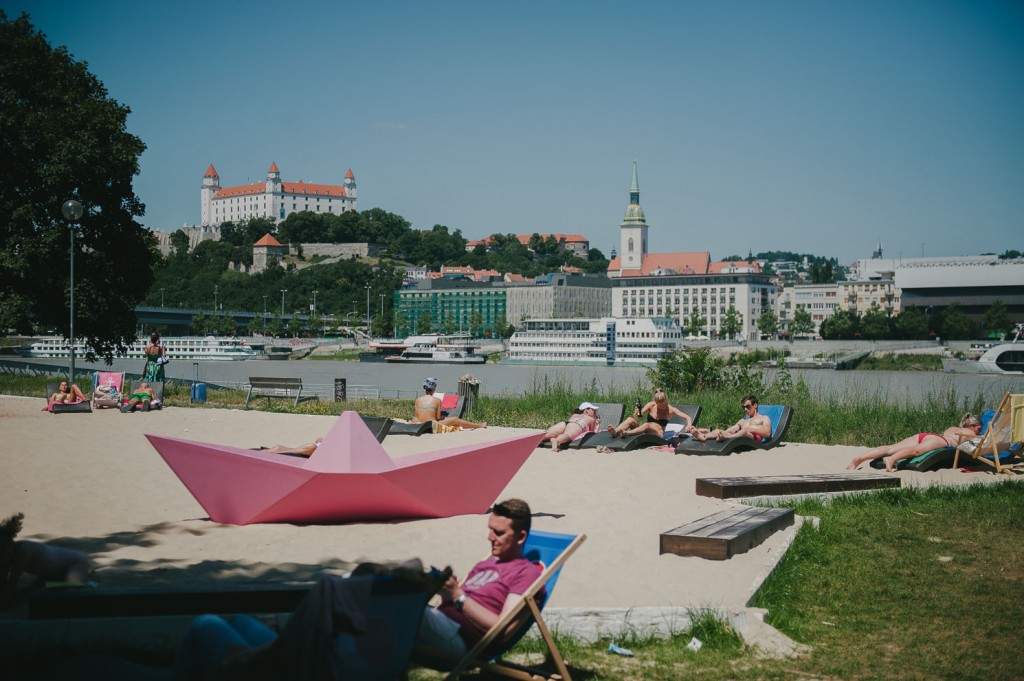
Beaches in Bratislava? Yep. | Photo by Alexandra Siebenthal
If the markets of Bratislava aren’t your thing or you’re looking for something to try next, my advice is the head to the squares. It’s no secret the locals in cities around the globe like to congregate in these spaces (not just for socialising, but also for protesting) and as such, squares are typically the perfect spot to get some air, sit at a café or on a park bench, engage in some quality people-watching, or meet a few locals and strike up a conversation. Bratislava, like most large, historic cities, has no shortage of squares, though I will recommend a few of my favourites.
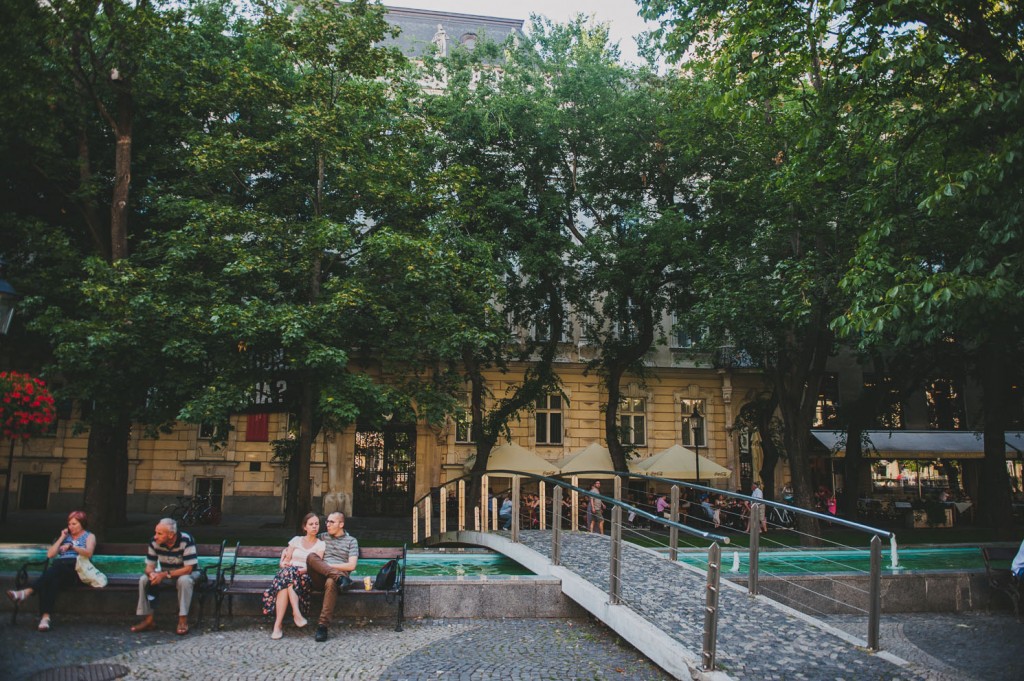
Locals know that the city’s squares are the perfect spot to relax and catch a breath of fresh air| Photo by Alexandra Siebenthal
The first square you absolutely have to visit is Franciscan Square, or Františkánske Námestie, as it’s called in Slovak. Now, I won’t lie — this square isn’t generally one of the liveliest or most exciting places, but it’s got a quiet charm with which you can’t help but fall in love. In the midst of the square’s tranquil surroundings lies Mirbach Palace, an 18th-century Rococo building constructed by a Bratislava brewer before falling into the possession of the Mirbach family. Now owned by the city, the palace serves as a museum housing baroque paintings, sculptures, and even some changing seasonal exhibits. It’s worth checking out for all of you archilovers out there.
In addition to the palace, Franciscan Square is also a religious hub, serving as a gentle reminder that while multicultural, Bratislava and the whole Slovak Republic is a traditionally Catholic region, meaning that there are no shortages of churches to see. Franciscan Square is home to both a church (aptly named the Franciscan Church) and an historic monastery from the 13th century.
During my stay, I had the pleasure of staying on the square and was pleasantly surprised on Sunday morning to hear the sound of many, many singing voices coming from within the church. In that moment, and in the following one when the church bells rang and the people spilled into the street after the service, I couldn’t help but feel like I had witnessed something timeless in hearing those sounds. Over the eras, countless scores of people have passed through that church and sang those songs. No matter what you may think of religion, it was incredibly cool to see the people of Bratislava going about their lives the same way they would have centuries ago. In that moment, the picturesque square was even more charming and timeless. The added bonus to visiting this spot? The Bratislava Urban Adventures office is right there, so you can see a new place and stop in and say hello! (I’m sure the team will even spare a live travel tip or two.)
Another open-air space you must visit is Hviezdoslav Square, or Hviezdoslavovo námestie. Located a bit more “inside” of the old town area, Hviezdoslav is more of a shaded promenade lined with medieval buildings, a number of embassies (American, German, and Czech among them), restaurants, cafés, fountains, and artwork. The square was even home to the historic Notre Dame cloister, where, in addition to housing nuns, also educated a number of Bratislava’s noble women in days gone by. Perhaps one of the most important landmarks on the square, though, has got to be the Slovak National Theatre. Not only is the building impressive with its Neo-Renaissance façade, but it’s also historic, as one of the oldest professional theatres in the country.
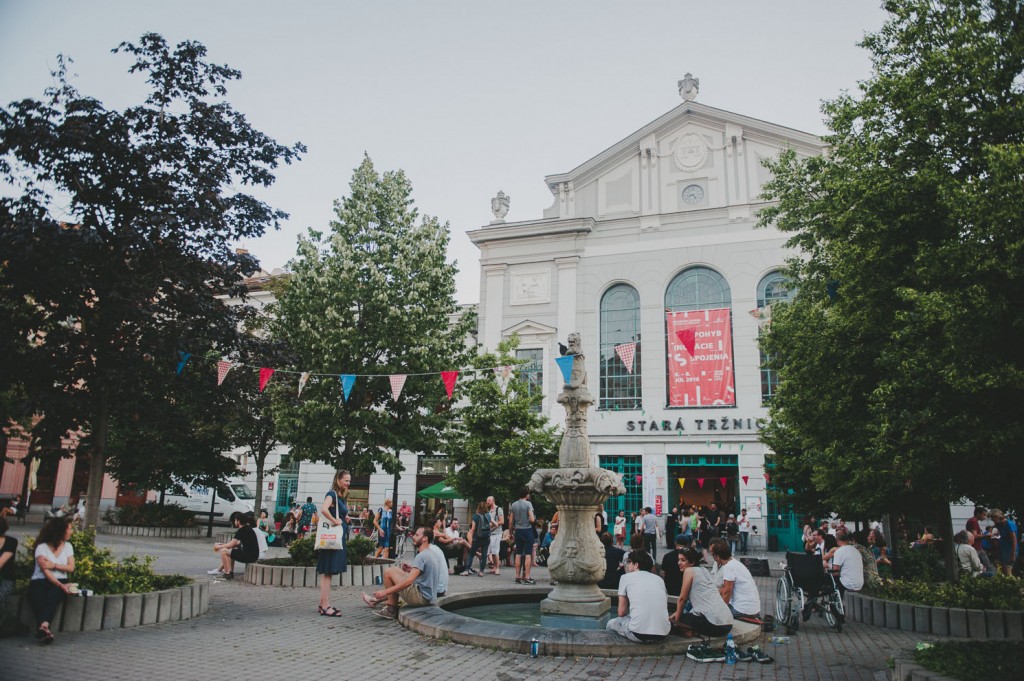
Bratislava’s squares are always full of life | Photo by Alexandra Siebenthal
If you happen to be strolling through Hviezdoslav Square, it’s only a hop, skip, and a jump over to the left bank of the Danube, where you’ll get an impressive view of the river as well as some of the city’s architecturally stunning bridges, including Most SNP (Bridge of the Slovak National Uprising), or the UFO Bridge as it’s lovingly dubbed.
If you’re looking for a place that packs a bit more of a modern punch then you can’t skip Námestie SNP, which is short for Slovak National Uprising Square. As you might have guessed, this square, like the bridge, honours the Slovak National Uprising of 1944, when the Slovak resistance (consisting of both democratic and communist members as well as members of the general public) rose up in an attempt to overthrow the Axis puppet government that controlled Slovakia towards the end of World War II. The square bears a monument to the violent and bloody struggle for freedom, and ever since has served as a gathering place for calls for political change, including the Velvet Revolution, and calls for national sovereignty. Though the square has a political legacy, these days it’s also home to some great cafés and shops, making it an excellent place to hang out even if you don’t plan on committing to any political activism.
From SNP Square, go check out some of Bratislava’s old city gates, leftover from a time when the city (and most smart medieval cities, in fact) was surrounded by a wall protecting the important centres of town. Bratislava historically had four gates, from which guards would patrol the perimeters and keep the riff-raff out — think Kings Landing on Game of Thrones. These days, only one of the old city gates is left somewhat standing: Michalská brána, or Michael’s Gate, which was originally constructed around 1300 and is now part of a larger tower/bridge. The fortification was renovated in the mid 1700s when the city jazzed it up a bit with a baroque façade, hence its more “modern” look. Today, the gate sits in a part of the old town known for luxury shopping and hotels, but don’t worry, you can still get your fill of history here. The gate serves as part of the Bratislava City Museum and holds its weapons collection and exhibition.
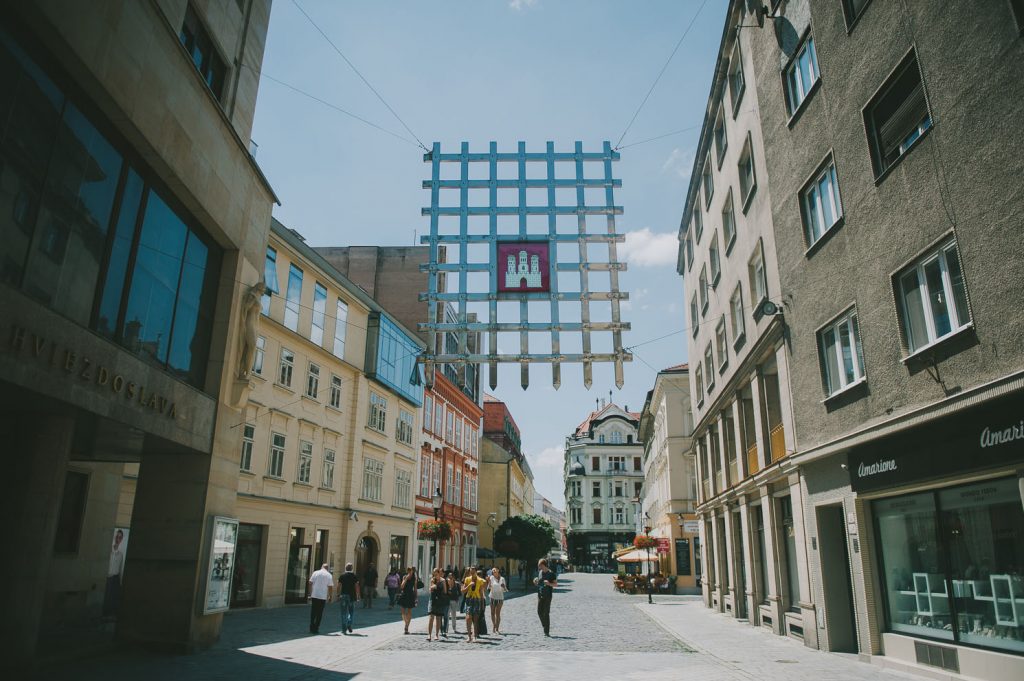
The actual gate may be gone, but its memory lives on | Photo by Alexandra Siebenthal
In addition to Michael’s Gate, you can also get a feel for the Bratislava of old (sometimes called Pressburg or Poszony) by checking out the remaining three city gates. Though they’re no longer standing, the city has chosen some creative ways to mark their presence. The best example of this is Laurinc Gate (Laurinská brána), which was named in honour of St. Lawrence. Once a fixture in the city from the 13th century, the gate was demolished in 1778, but today a hanging gate sits suspended over the spot it once stood as a monument to the past. Rybárska brána, or the Fishermen’s Gate, exists in a similar state by the Slovak National Theatre, although rather than suspended in the air, the old remnants of the gate, which once led to and from Bratislava’s suburbs, can be glimpsed through a cubbyhole showing what the city looks like underground.
The next historic entryway on the list is Vydrická brána, or the Vydricka Gate, Named for its association with the tiny hamlet of Vydrica, the Vydricka Gate once stood beside the still-there Cathedral of St. Martin, which some people say was actually built right up against the old city fortifications. If you visit the spot today, you’ll also note that it’s lies close to the monument to the city’s Old Synagogue, which was demolished in the 1970s to make room for the New Bridge, or Most SNP as it’s been renamed.
By this point, I’m going to go out on a limb and say that you’re tired, your feet hurt, you’re hungry, or some sort of combination of all of these. Don’t worry, though, in spite of the time crunch, I promise there’s still time to grab some great eats. (I’m going to be honest with you here: if a trip doesn’t involve at least one taste of something awesome, traditional, or that you’ve never had before, it’s a wasted trip for me.)
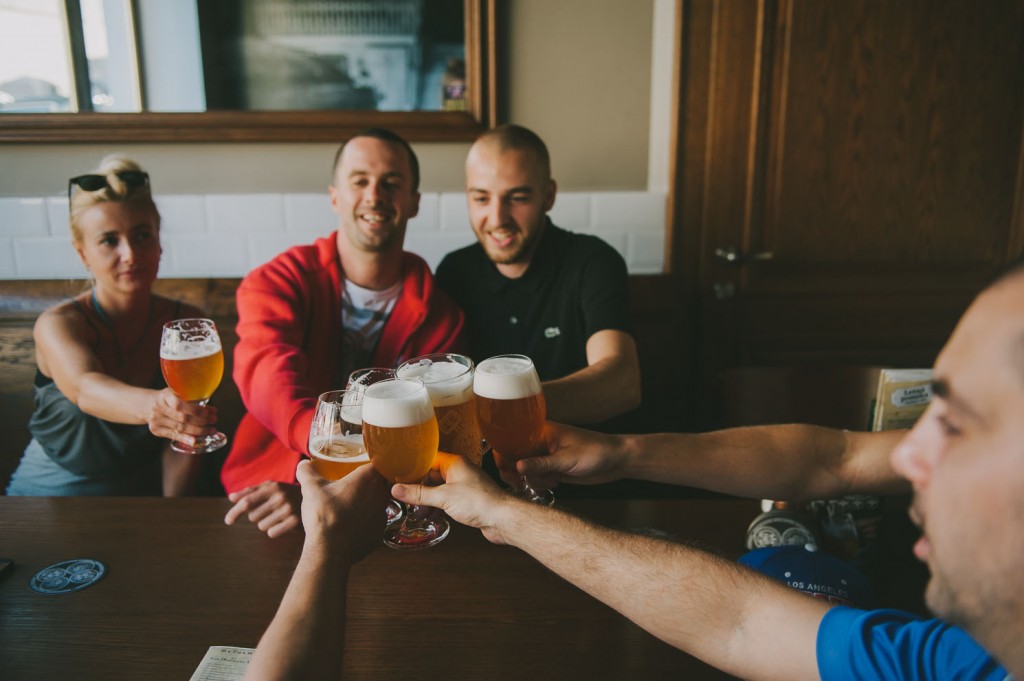
Grab a beer (maybe with some new Slovak friends) and rest your feet | | Photo by Alexandra Siebenthal
If you’re looking for some quality places to grab a bite, check out a few of my recommendations in our Beginner’s guide to Slovak food. However, if you’re looking for one place to sum up what I think is the quintessence of traditional Bratislava cuisine, there’s no better place than Meštianky pivovar, or the City Brewery. With two locations to choose from (one closer to the historic city centre and one further, albeit larger and with a cool outdoor garden), Meštiansky pivovar provides an airy, comfortable atmosphere in which to rest your weary legs. While you’re there, it would be a sin not to dig into their amazing local food, ranging from hearty traditional meals to beer cuisine to fresh seasonal offerings. Wash it down with a litre or two of their beers, which rank as some of the most well-brewed in the city. You’ll be ready to adventure again in no time!
While Bratislava has some great outdoor sights, it’s also got some awesome structures worth seeing, first of which is the Little Blue Church, or the Church of St. Elizabeth, as it’s formally named. It’s not exactly hard to miss why everyone refers to it as the Blue Church, though, as almost every inch of the charming art nouveau church, including the interior, is either the bright, pale blue of a cloudless sky or white. A popular destination for local weddings, St. Liz’s was initially conceived as a chapel for a nearby gymnázium, which is Central European-speak for secondary or high school. Designed in the early 1900s by the Hungarian architect Odon Lechner, the church was originally a paragon of pastel until it was repainted in the image of all things azure.
If we’re talking about churches in Bratislava, one you can’t miss is the gothic St. Martin’s Cathedral located on Rudnayovo námestie, abutting the Vydrická brána. A gorgeous example of gothic architecture, the cathedral was consecrated in the 1450s. Surrounded by cafés, bistros, and coffee shops, the cathedral’s towering steeple rises up from the city skyline like an elegant beacon, which, in a way, is only fitting, since St. Martin’s served as the coronation church of the Kingdom of Hungary from 1563 until 1830, and was even the spot where Holy Roman Empress Maria Theresa was crowned Hungarian queen — talk about impressive! If you’re a classical music buff, you’ll be happy to hear that the cathedral has even been approved by Beethoven; the famous composer premiered his Missa Solemnis within its very walls.
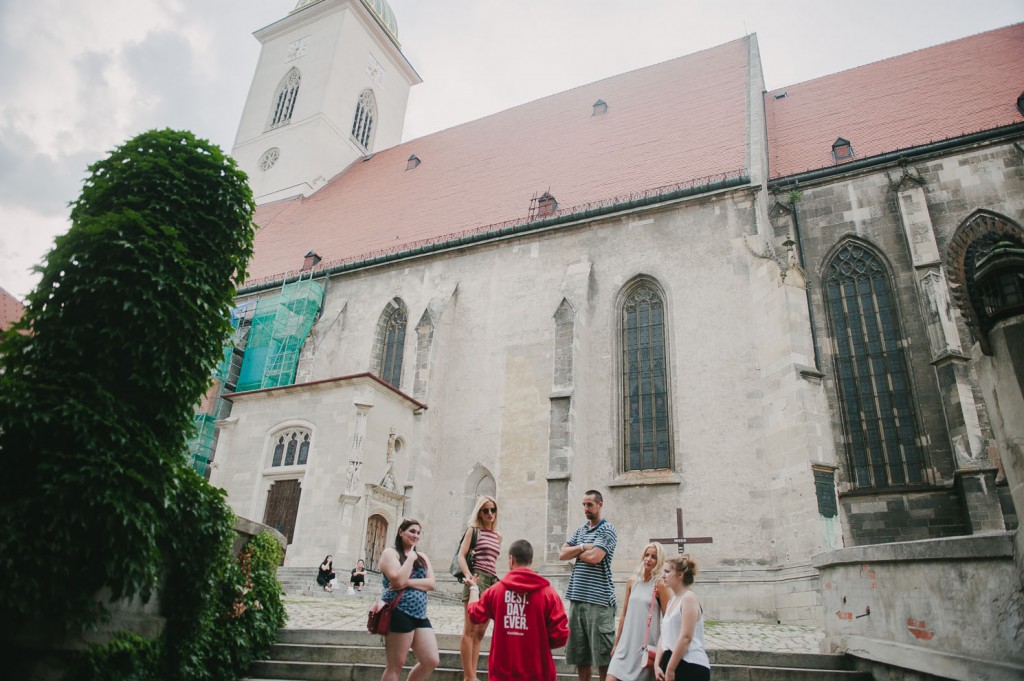
Gorgeous gothic architecture is everywhere | Photo by Alexandra Siebenthal
My third and final suggestion for all of you archilovers out there has got to be Bratislava Castle. Sure, it’s a trek up the hilld, but you can’t miss a trip to the top. Seeing the city sprawled out below you and the Carpathian landscape around, you can’t help but feel like you’re on top of the world. Besides, a little cardio is good after chowing down on some authentic Slovak food. The castle, situated atop what seems like the largest hill in the centre of Bratislava, looks more like a fortress than a castle, but don’t let that trick you into thinking the spot is of little importance. The spot was actually a site of settlements long before the Slavs arrived in the area, serving as a vital stop on the Amber trading route through Europe. It’s been said that a settlement has existed in this space as far back as 3,500 BCE, and was home to the Celtic Boii as well as a few of those warrior-types known as the Romans.
Local lore puts the castle as an important part of the ancient Great Moravian Empire, which at one point stretched across the European continent from sea to sea, running from the north to the south. It’s said that it’s from this time that Bratislava actually received its modern name, after one of the princes of the time — who knew? Certainly not the prince, who was long dead before Bratislava became the official name! Today, the castle gets much of its appearance thanks to the remodels of the one and only Holy Roman Empress Maria Theresa (yeah, her again… get used to it in Central Europe — the lady was everywhere!) and her children.
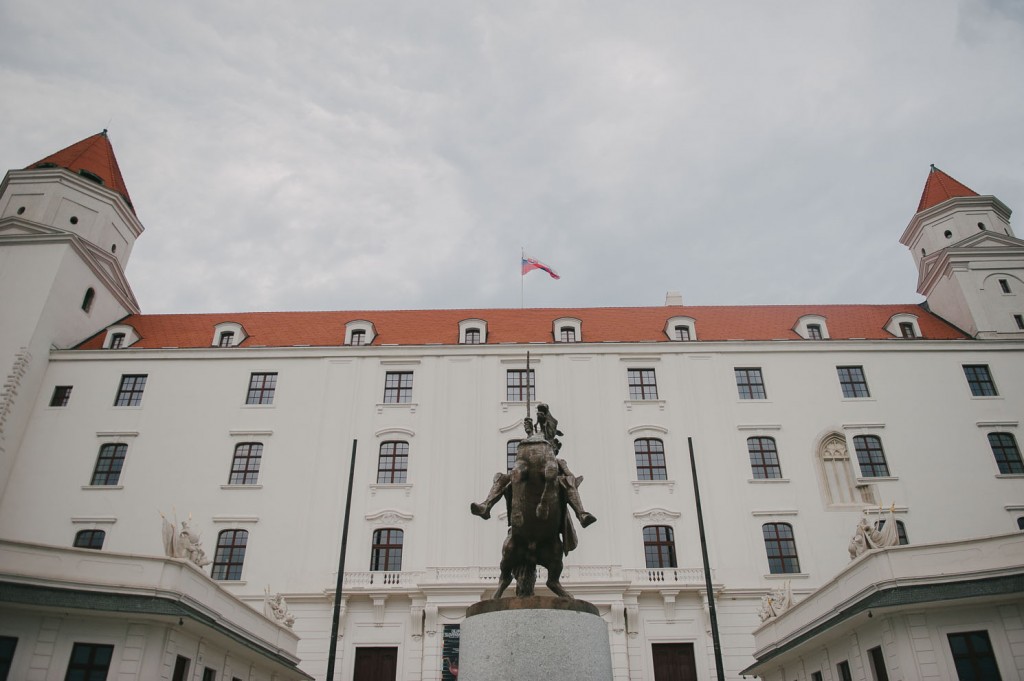
If you see just one site in the city, make it Bratislava Castle | Photo by Alexandra Siebenthal
Eventually, the castle fell out of use with the changing status of Hungary and Austria and their combined empires, though at one point it was restored to the fortress-like splendour that the castle is now. It may not be the most glamourous structure in the world, or even in Europe, but there’s something about the castle’s tough exterior and soft, beautiful insides that speak to something about the character of the city — it’s a place that’s been through a lot, from different rulers and kingdoms to struggles to wartime to communism and independence, yet still it remains standing, just like the people of Bratislava. If you do nothing else on your stay, at least glance up at the castle hill and think about that for a second, although I would recommend hitting the area at sunset since its gardens make for some awesome dusky strolls.
And that, my friends, is how you do Bratislava with just a few days. Sure, you may not have gotten to see everything, but that doesn’t mean you can’t enjoy the time you do have in the city. If you didn’t get to everything, well, that’s what return trips are for.